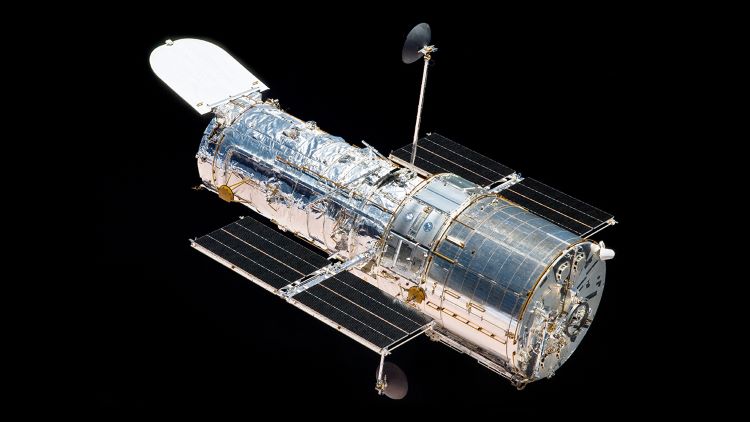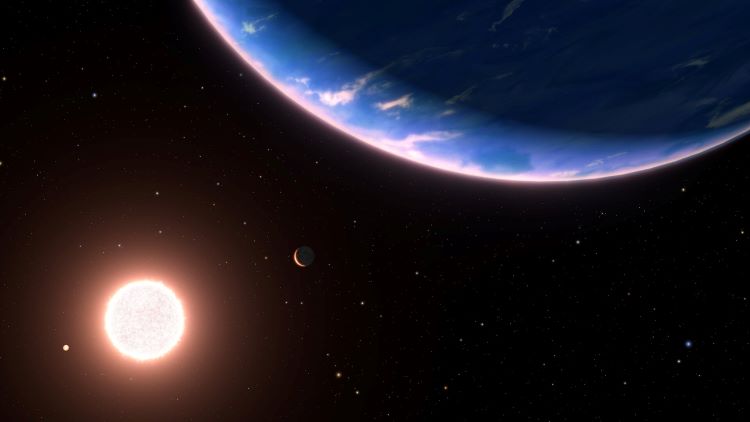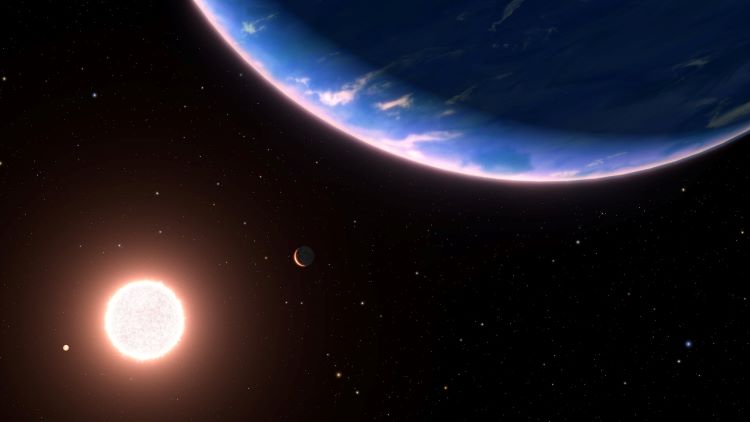A recent study published in The Astrophysucal Journal Letters discusses the detection of water within the atmosphere of GJ 9827 d, which is a Neptune-like exoplanet located approximately 97 light-years from Earth, using NASA’s Hubble Space Telescope (HST), and is the smallest exoplanet to date where water has been detected in its atmosphere. This study was conducted by an international team of researchers and holds the potential to identify exoplanets throughout the Milky Way Galaxy which possess water within their atmospheres, along with highlighting the most accurate methods to identify the water, as well.
For the study, the researchers analyzed data using Hubble’s Wide Field Camera 3 (WFC3), which is a fourth-generation ultraviolet imaging spectrograph (UVIS)/Infrared (IR) imager that replaced the Wide Field Planetary Camera 2 during Servicing Mission 4, which was conducted by STS-125 in May 2009 and was the fifth and final servicing mission for Hubble. The researchers used WFC3 to observe 11 transits of GJ 9827 d, which orbits its star in 6.2 days, over a period of three years and identified what they hypothesize to be water within the exoplanet’s atmosphere. While the team stops short at confirming the existence of water, they eliminated the likelihood that the results were from starspots after analyzing data from NASA’s Kepler/K2 mission.

“This would be the first time that we can directly show through an atmospheric detection that these planets with water-rich atmospheres can actually exist around other stars,” said Dr. Björn Benneke, who is an Associate Professor and the Head of the Astronomy Group within the Department of Physics at Université de Montréal and lead author of the study. “This is an important step toward determining the prevalence and diversity of atmospheres on rocky planets.”
While the team does not definitively confirm the existence of water within GJ 9827 d’s atmosphere, they do have a series of competing hypotheses pertaining to how and why water could exist: the atmosphere is rich in hydrogen like most gaseous planets but with traces of water, which the team was fortunate enough to detect; or GJ 9827 d is a rocky planet surrounded by a water vapor envelope. However, the team notes that recent studies of GJ 9827 d have suggested it could lose more than half of its atmosphere over the course of one billion years, meaning GJ 9827 d isn’t likely to possess an atmosphere dominated by hydrogen.
“The planet GJ 9827 d could be half water, half rock. And there would be a lot of water vapor on top of some smaller rocky body,” said Dr. Benneke.
GJ 9827 d’s temperature is estimated to be approximately 425 degrees Celsius (800 degrees Fahrenheit), or about as hot as the surface of Venus. Therefore, the water vapors the astronomers have potentially detected could be steam resulting from the parent star’s intense heat. Either GJ 9827 d is a rocky exoplanet with a watery envelope currently being boiled off, or the same could be happening to its all-gaseous atmosphere, as well. Discovered using the transit method in 2017 by NASA’s Kepler/K2 mission, GJ 9827 d’s radius is approximately 3.5 times larger than the Earth and slightly over twice the mass, possibly further strengthening the argument that it’s a rocky exoplanet, but that has yet to be confirmed.

The researchers note that GJ 9827 d could be a future observational target by NASA’s James Webb Space Telescope (JWST), as JWST has conducted atmospheric observations on a myriad of exoplanets, including WASP-80 b, WASP-39 b, and K2-18 b, just to name a few.
What new discoveries will astronomers make about GJ 9827 d and other watery exoplanets in the coming years and decades? Only time will tell, and this is why we science!
As always, keep doing science & keep looking up!

